

 High or low alcohol
High or low alcohol
Are you one of those consumers who think that the alcohol level in wines is getting higher and higher? Actually, this is an undisputed fact. Wine has more alcohol now than it had in the past. Some consumers do not care, while others look at the label and are horror-struck if it says 14.5% or even 15%. But if the balance is there, does it matter? Is the important thing getting less alcohol into the body or is it the style of the wine that they don’t like?
The alcohol level is much discussed today, both by consumers and producers. Technology to reduce the alcohol level is available. You can use advanced technology like spinning cone or reverse osmosis. You can use a special type of yeast that eats more sugar for each percentage of alcohol produced. You can use simple techniques like earlier harvest.
One reason for today’s higher alcohol levels is of course that we drink wines that come from completely different places than we did 30 years ago. New World countries have mostly sunny and warm climates that provide rich wines strong in alcohol.
But even wines from classic European regions are now stronger in alcohol, more due to improved clones and improved techniques in the vineyard than to global warming. Today grapes are harvested riper, with more sugar and thus giving more alcohol. The tannins are softer and the acidity is lower. Just the way most wine consumers want their wines.
You should also keep in mind that European laws do not allow wine producers to mention the exact alcohol content on the label. You have to round up or down to the nearest half or full percentage point. So if the wine has 14.9% alcohol the producer can choose what he thinks attracts consumers the most, 14.5% or 15%.
So on the whole; perhaps it’s better to simply care about if the wine tastes good or not instead of judging the wine from a number on the label.
Autumn season
We have travelled to many different wine regions over the last two months. A “normal” year for us means that we have some 100 travel days and visit at least some 200 wineries (we organise around 30 wine tours each year). Many of these visits are now, during autumn. I would guess that we have more “wine travel days” than most people, even professionals in the wine business. It is much thanks to this that we can give you news and updates on what is going on in the world of wine.
But it also means that at this time of the year we don’t have time for much else than travel. So this month, like last, is a bit light on what we give you as wine reading, as you can see in this Brief. But we will catch up during winter.
A quick vintage report: most regions that we have visited seem very happy with this year’s quality. Some, especially in France, will have lower quantities than normal though. But there is hardly any risk of shortage of good wines!
Spring wine tours
So until next month I suggest that you take a look at the spring wine tours (the winter tours are already fully booked). We have some exciting and excellent tours in store for you.
Britt & Per
PS: Recommend to your friends to read the Brief!
What’s on at BKWine Tours
- Chile and Argentina in South America, January 28 – February 12, 2017 (fully booked)
- South Africa, February 24 – March 7, 2017, with Safari add-on and Golf add-on (fully booked)
- Champagne, April 19-23, 2017
- Bordeaux, May 3-7, 2017
For more information please contact us on email or on phone (we’re on French time), or go to our wine travel site on www.bkwinetours.com!
We also make custom designed wine tours – on-demand tours for you and a group of friends, for your company (maybe to scout new winegrowers?), for a special event… We can combine winery visits and wine touring with other activities: gastronomic workshops, visit to an oyster farm, truffles hunting, cheese making, and more. More info on the custom designed and bespoke BKWine wine tours and travel here!
Read our book(s)
We have written several wine books, nine at the last count. One of them has been translated to English; the others are (so far) only available in Swedish. This is the one that is available in English: Biodynamic, Organic and Natural Winemaking, Sustainable Viticulture and Viniculture
All our books are on wine, but on different subjects: wines of the Languedoc, wine growing and wine making, the wines of France, Tuscany, Bordeaux, Piedmont, Burgundy, Champagne. Several have won prestigeous prizes and awards. Read more on our wine books.
From the World of Wine
In Brief
In short, news and stuff from the world of wine.
The countries with the world’s biggest vineyard acreage in 2015, in short
OIV, the International Organisation of Vine and Wine (Organisation Internationale de la Vigne et du Vin), recently presented statistics for 2015 and 2016 on wine production and wine growing in the world. In 2015 the world grape surface increased to 7.5 million hectares.
Spain still leads with just over one million hectares. China is in second place, a position they conquered the previous year, with 830.000 hectares and France is third with 786.000 ha. Italy is number four with 682.000 ha, Turkey is number five with 497,000 ha and the United States is in sixth place with 419.000 hectares. More info www.oiv.int.
The world’s biggest wine producing countries in 2016, in short
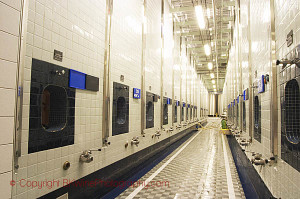 The ranking of the world’s biggest wine countries is a bit different if you look at wine production compared to the top list for vineyard acreage. Here are the preliminary figures for 2016 (in million hectoliters) for the biggest wine producers according to OIV statistics:
The ranking of the world’s biggest wine countries is a bit different if you look at wine production compared to the top list for vineyard acreage. Here are the preliminary figures for 2016 (in million hectoliters) for the biggest wine producers according to OIV statistics:
- Italy, 48.8 Mhl
- France, 41.9 Mhl
- Spain, 37.8 Mhl
- USA, 22.5 Mhl
- Australia, 12.5 Mhl
- China, 11.5 Mhl
- Chile, 10.1 Mhl
- South Africa, 9.1 Mhl
- Argentina, 8.8 Mhl (a decrease of around 30% compared with 2015 due to the weather conditions)
In total the world produced 259 million hectolitres in 2016. World consumption is estimated at 240 million hectolitres. More info: www.oiv.int.
Congratulations on the 80th anniversary to Crémant d’Alsace
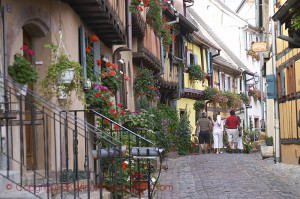 This year the appellation Crémant d’Alsace celebrates its 40 years. Congratulations! This sparkling wine has had great success in recent years. Sales have increased from 1 million bottles sold in 1979 to today’s 35 million. Crémant d’Alsace is today the second sparkling wine in France after Champagne. The second best-selling crémant is Crémant de Bourgogne with around 17 million bottles annually.
This year the appellation Crémant d’Alsace celebrates its 40 years. Congratulations! This sparkling wine has had great success in recent years. Sales have increased from 1 million bottles sold in 1979 to today’s 35 million. Crémant d’Alsace is today the second sparkling wine in France after Champagne. The second best-selling crémant is Crémant de Bourgogne with around 17 million bottles annually.
The most common grape in a Crémant d’Alsace is pinot blanc, but chardonnay, riesling and pinot gris are also used. The rosé is made of only Pinot Noir. The wine is made with a second fermentation in the bottle, just like all crémant wines from around France. The minimum ageing before the disgorging is 12 months.
Tenute Silvio Nardi Brunello di Montalcino 2011 | Åsa’s wine of the month
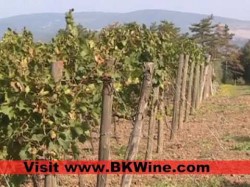 Autumn sneaks up on us. We light a fire to keep warm. Stews simmer in the kitchen. This is a good time to pop the cork in a Brunello di Montalcino. Like for instance the one from Tenute Silvio Nardi. 2011 does not have the same cult status as 2010 but it still shows excellently the quality of wines from Montalcino. Spicy aromas with aniseed and cloves mix with ripe dark cherries. Smooth tannins and a long finish. The ripe fruit flavours are tempered by a fresh acidity. Perfect a chilly evening when you need something warming for dinner. Price around 30 euro.
Autumn sneaks up on us. We light a fire to keep warm. Stews simmer in the kitchen. This is a good time to pop the cork in a Brunello di Montalcino. Like for instance the one from Tenute Silvio Nardi. 2011 does not have the same cult status as 2010 but it still shows excellently the quality of wines from Montalcino. Spicy aromas with aniseed and cloves mix with ripe dark cherries. Smooth tannins and a long finish. The ripe fruit flavours are tempered by a fresh acidity. Perfect a chilly evening when you need something warming for dinner. Price around 30 euro.
Watch a short video on Tenute Nardi.
Penfolds want natural cork in quality wine and sees issues with screw caps
What is the best, screw tops or natural cork? Yes, this is a debate that I am sure will continue for some time yet. One of the major proponents of the screw cap, Australian Penfolds, has recently made some new contributions to the debate. Peter Gago, their wine makers, does not think that the screw cap has a future, at least not for more expensive wines. However, he believes that the glass cork can be an interesting alternative. He also says that thanks to the fact that cork damages is now down to only around 1% many producers are going back to natural cork. And he points out that also with screw caps you can have a defect wine. Gago says that 1% of all wines with screw caps are oxidized due to the screw cap being damaged during transport or handling.
Gago have discovered another drawback with the screw cap. It masks the effect of heat damage. A red wine sealed with a screw cap looks perfect even if it has been exposed to 50 degree heat for several weeks, for example during a long transport in a non-refrigerated container. A natural cork, however, shows clear signs of such (mis-)treatment. It leaks and starts to push its way up. Read more on Penfolds’ winemaker’s views on different closures thedrinksbusiness.com.
Bordeaux is now in Nouvelle Aquitaine
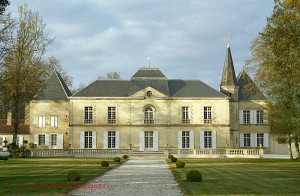 The “new” and very big region in the south-west of France that was created on January 1, 2016 by merging the regions of Aquitaine, Limousin and Poitou-Charentes, has finally received its name: Nouvelle Aquitaine, New Aquitaine. It is in some ways quite a good name, even if it feels a bit like it belongs on the other side of the Atlantic.
The “new” and very big region in the south-west of France that was created on January 1, 2016 by merging the regions of Aquitaine, Limousin and Poitou-Charentes, has finally received its name: Nouvelle Aquitaine, New Aquitaine. It is in some ways quite a good name, even if it feels a bit like it belongs on the other side of the Atlantic.
Nouvelle Aquitaine stretches along the Atlantic coast, from the Spanish border up to the Loire Valley, and includes wine regions like Bordeaux, Bergerac and Cognac. It is the largest region in France. Bordeaux is its largest city with 850,000 inhabitants, the seventh largest city in France.
Cinsault to have a break-through in South Africa?
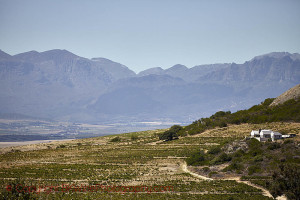 We have always been fond of the southern French grape Cinsault. It has never belonged to the prestigious grapes and it has led quite an anonymous existence. It has either been used for rosé wines or brought elegance to Languedoc blends of Grenache and Syrah. A few producers have however shown us how good Cinsault can be as a single variety. Patricia Boyer-Domergue at Clos Centeilles in Minervois was a Cinsault pioneer in the 1990s.
We have always been fond of the southern French grape Cinsault. It has never belonged to the prestigious grapes and it has led quite an anonymous existence. It has either been used for rosé wines or brought elegance to Languedoc blends of Grenache and Syrah. A few producers have however shown us how good Cinsault can be as a single variety. Patricia Boyer-Domergue at Clos Centeilles in Minervois was a Cinsault pioneer in the 1990s.
Now the grape is getting attention in South Africa. We have tried some very good Cinsault-based wines in Swartland and other regions of South Africa. Cinsault (or Cinsaut as it is sometimes spelled) was once South Africa’s most planted black grape. As Chenin Blanc it was used a lot in brandy production. It used to be called Hermitage, which explains the name they gave to the Pinotage, a South African cross between Pinot Noir and Cinsault. Some producers are now so enthusiastic about the come-back of Cinsault that they think that it can become the country’s new signature grape, something of a “Malbec of South Africa” (with inspiration from Argentina). Read more: thedrinksbusiness.com.
Organic wine producers employ more people
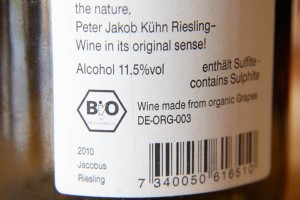 The organic wine producers are hiring more people, according to a French study published in October. The organic growers often say they need more people in the vineyard and in the cellar, and now it has been “proven”. On average, the organic producers create 1.5 times more jobs than the conventional producers.
The organic wine producers are hiring more people, according to a French study published in October. The organic growers often say they need more people in the vineyard and in the cellar, and now it has been “proven”. On average, the organic producers create 1.5 times more jobs than the conventional producers.
34.6% of the organic producers have one or more permanent employees compared to 21.6% for the conventional ones. 71.49% of the workers in organic estates work full-time, compared with 66.83% in the conventional ones. The easiest place to get a job is in Provence and in Corsica. These two regions account for 37% of jobs in organic wine estates. Read more: mon-viti.com.
If you want to know more about organic wines you can read our book Biodynamic, Organic and Natural Winemaking; Sustainable Viticulture and Viniculture.
A selection of Italian and Spanish wines from Zonum Fine Taste
We have tasted a handful of nice wines from the range of Zonum Fine Taste, a new wine and food importer (to Sweden). From Spain we tasted wines from the family producer Cellers Capanons-Osso that has vineyards both in DO Montsant and in DOQ (DOCa) Priorat, both in Catalonia in northern Spain. From Italy we tried prosecco from Malibràn.
Vessants 2009, DO Montsant, Cellers Capafons-Osso:
Quite a lot of southern “heat” in this wine and plenty of ripe fruit. The alcohol level is high but is balanced by the high acidity, which gives a well-balanced wine. ~20 euro.
Masos d’en Cubells 2004, Priorat, Cellers Capafons-Ossó:
Equally exellent balance in this wine in spite of the high alcohol. Full-bodied, powerful and complex with also elegant. ~50 euro.
Malibràn Credamora Col Fondo Senza Solfiti aggiunti, Valdobbiadene DOCG Prosecco 2014:
No added sulphur in this wine. Light and very elegant prosecco with no more than 10.5% alcohol. Lots of flavours with some toastiness and flowers. Col Fondo is an old method that signifies that the wine has a secondary fermentation in bottle and is unfiltered.
Malibràn 5 Gramme Prosecco Brut:
Only five grammes of sugar in this very tasty and complex prosecco with plenty of fruit and good length and body.
Features
Features that we have published during the past month, with lots of reading for you.
Schug Winery, a heritage carried forward with Axel Schug and Michael Cox
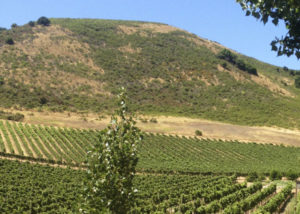 “When ‘the Judgement of Paris’ crowned Cabernet king in Napa in the late 1970’s, it proved a back-handed boon for Walter Schug, though he didn’t know it at the time. Schug would emerge a leader in the Valley’s wine community, and instrumental in helping form Carneros AVA, Sonoma’s first official wine growing region geared towards Pinot Noir and Chardonnay. Walter Schug died in October 2015.
“When ‘the Judgement of Paris’ crowned Cabernet king in Napa in the late 1970’s, it proved a back-handed boon for Walter Schug, though he didn’t know it at the time. Schug would emerge a leader in the Valley’s wine community, and instrumental in helping form Carneros AVA, Sonoma’s first official wine growing region geared towards Pinot Noir and Chardonnay. Walter Schug died in October 2015.
This exclusive interview grew out of a recent site visit to Schug Winery to converse with Walter’s son Axel Schug and wine maker Michael Cox. I walked away with over 2 1/2 hours of recorded interview, which translated into over 12,000 transcribed words.”
That is the ominous beginning of BKWine Magazine contributor LM Archer’s article, but do not worry. The rest of the article is not 12,000 words. Read (the significantly fewer) words this legendary Californian winery on BKWine Magazine: Schug Winery, a heritage carried forward with Axel Schug and Michael Cox.
AXA Insurance’s prestigious wine estates in Bordeaux, Portugal and Hungary
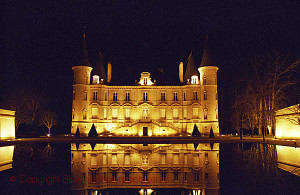 It is not uncommon today for banks and big companies to own prestigious wine chateaux in Bordeaux and elsewhere. One of these is French company AXA Insurance. Since 1987 they have acquired wine estates in Bordeaux, in Burgundy, in the Tokaj region of Hungary and in the Douro Valley in norther Portugal. The AXA wine estates are run through a subsidiary called AXA Millésimes (millésime meaning ‘vintage’ in French). In total AXA owns more than 500 hectares of vineyards around Europe.
It is not uncommon today for banks and big companies to own prestigious wine chateaux in Bordeaux and elsewhere. One of these is French company AXA Insurance. Since 1987 they have acquired wine estates in Bordeaux, in Burgundy, in the Tokaj region of Hungary and in the Douro Valley in norther Portugal. The AXA wine estates are run through a subsidiary called AXA Millésimes (millésime meaning ‘vintage’ in French). In total AXA owns more than 500 hectares of vineyards around Europe.
Read more on Britt’s article, originally published on Forbes, on BKWine Magazine: Top wines from Axa Millesimes in France, Portugal, Hungary | Britt on Forbes.
Wine tours
Some information about current and future wine tours with BKWine.
Is Champagne always best?
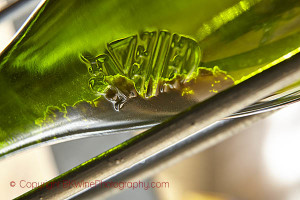 Can you tell the difference between a champagne and other sparkling wines? We’ve had the question many times. It is not an easy question. Yes, often we do, but it depends on what kind of champagne it is and what kind of “other” sparkling wine. But it is admittedly hard to beat a really well-made champagne. Perhaps it is toasty, maybe white flowers, green apples, or honey. The taste is mouth-filling, stays with you for a long time and is refreshing.
Can you tell the difference between a champagne and other sparkling wines? We’ve had the question many times. It is not an easy question. Yes, often we do, but it depends on what kind of champagne it is and what kind of “other” sparkling wine. But it is admittedly hard to beat a really well-made champagne. Perhaps it is toasty, maybe white flowers, green apples, or honey. The taste is mouth-filling, stays with you for a long time and is refreshing.
On our wine tour to Champagne you will get a real insight into the difference between a champagne and other sparkling wines. But if a champagne is “better” is perhaps not the most important thing. It should (and does) come from the hills in Champagne in north-east France. Nor from anywhere else! And that it tastes delicious. The wine tour to Champagne takes place in April.
(And early next year our new book on Champagne will be available.)
”Bordeaux, yes, but which vintage?” Does it matter?
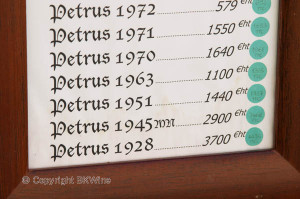 For Bordeaux people talk vintages. Vintages are a subject of discussion also in other regions, but not as much as in Bordeaux. The reason is perhaps that this is where you can find investment-grade wines. Wines that you don’t buy to drink but buy to sell, hopefully at a profit. It is a very small fraction of Bordeaux wines that you can buy as investment, and really only certain vintages of those. Hence the vintage fixation.
For Bordeaux people talk vintages. Vintages are a subject of discussion also in other regions, but not as much as in Bordeaux. The reason is perhaps that this is where you can find investment-grade wines. Wines that you don’t buy to drink but buy to sell, hopefully at a profit. It is a very small fraction of Bordeaux wines that you can buy as investment, and really only certain vintages of those. Hence the vintage fixation.
Even if one cannot afford (or does not want to pay the high price of) these investment wines it can be interesting to know a bit about vintages. But one should never simply reject a vintage. There are no “bad” vintages! Some years give a riper and softer style, others can be tighter or more structured. Bordeaux producers with a certain ambition make good wines every year, but in different styles. You don’t believe us? Then come on the wine tour to Bordeaux in May and judge for yourself!
Don’t be an egoist! Share with your friends and other wine enthusiasts! Forward the Brief to your friends! Suggest that they sign up for a free subscription !
© Copyright BKWine






